








Designed by Nigel G Wilcox





The Paragon Of Metal Detecting
& Archaeology
& Archaeology
Powered By Sispro1
Norman A.D. - Currency Numismatics,
Penny
For Reference ONLY
Everything For The Detectorist
Copyright All Rights Reserved by Nigel G Wilcox E-Mail: ngwilcoxgmail.com

1.
Stephen 1135-1154 AD
2.
3.
4.
5.
6.
7.
8.
9.
Penny
10.
11. a.
b.
b.
12.
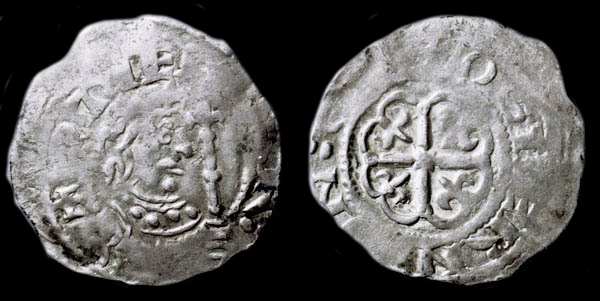
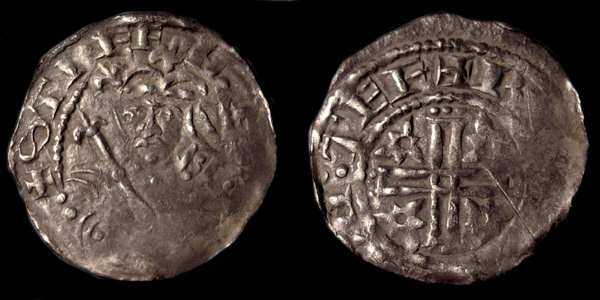
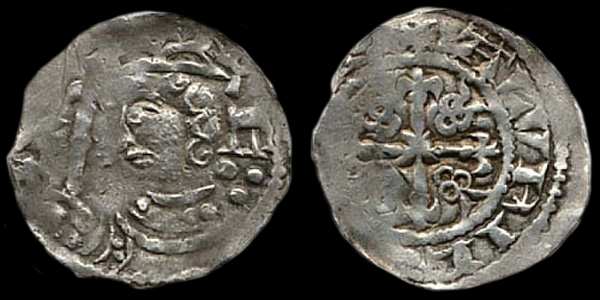
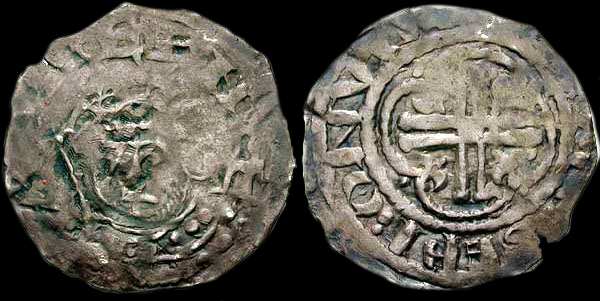
moneyer: unpublished
ex. Spink NC, February, 1948, #1515
ex. Lord Grantley collection, Part IV, Glendining's, 20 April 1944, #1300
ex. H. M. Reynolds sale, Sothebey's, 5 June 1919, #62 (sold for 8 Pounds Sterling)
ex. Spink NC, February, 1948, #1515
ex. Lord Grantley collection, Part IV, Glendining's, 20 April 1944, #1300
ex. H. M. Reynolds sale, Sothebey's, 5 June 1919, #62 (sold for 8 Pounds Sterling)
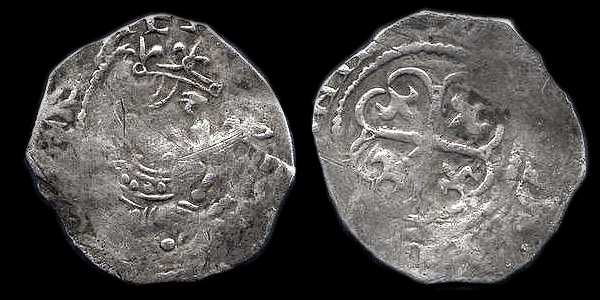
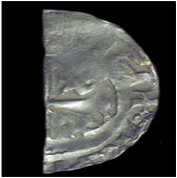
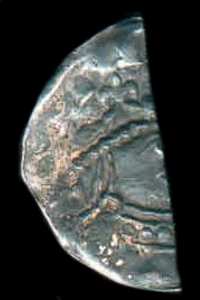
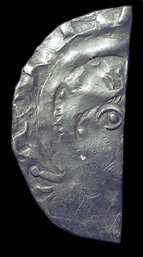
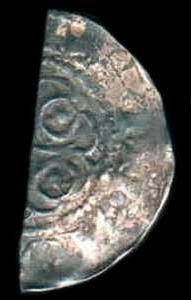
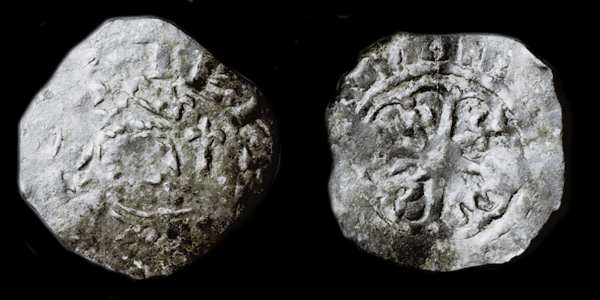
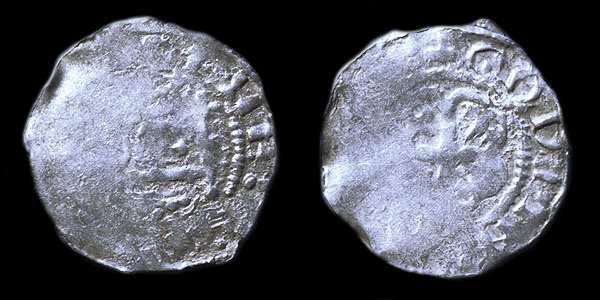
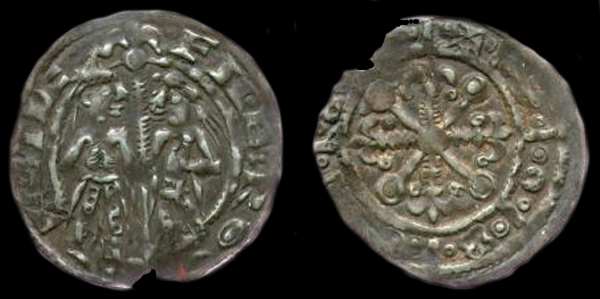
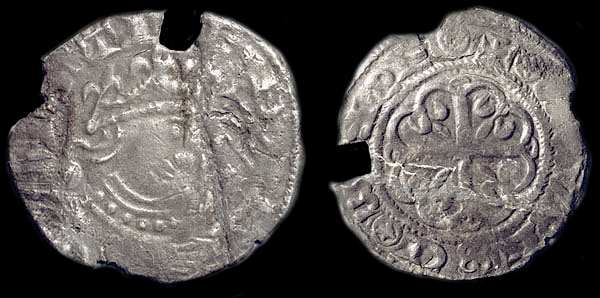
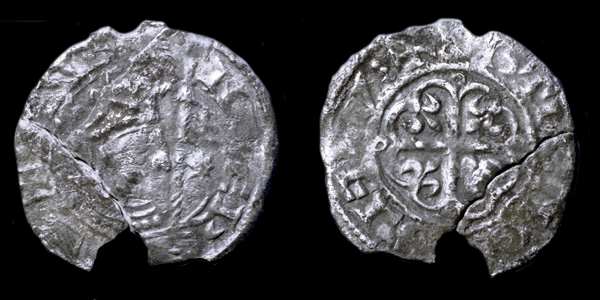
b.
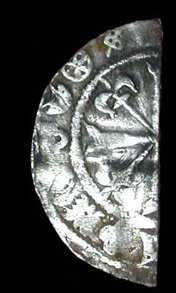
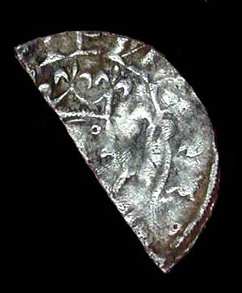
Stephen 1135-1154 AD
1. The first regular issue of Stephen has a cross moline on the reverse, and is called the Watford type because of the large hoard of over 600 coins of this type found in Watford, Herts in 1818. The moneyer of the coin shown here is Osbern, and the mint is most likely Ipswich, but could be Oxford if the "G" is an "O."
2. The second regular issue is the Voided Cross type which has mullets in the four reverse quadrants. This coin may have been struck beginning in 1145, but I believe that it was struck earlier, perhaps shortly after the total solar eclipse that crossed England on March 20, 1140. The coin shown here (Seaby #1280) was struck in Thetford by Baldewin.
3. The third regular issue is the Cross Fleury type which has trefoils in the four reverse quadrants. This coin may have been struck beginning in 1150, but if the trefoils represent a comet, then this type may have been struck shortly after Halley's comet of 1145 that was seen in England. The coin shown here was struck in Norwich by Alfric.
4. In 1154, Stephen s last coinage was the Awbridge type, named after the Awbridge hoard found in 1902. This type continued to be struck during the first four years of the reign of Henry II. The coin shown here (Seaby #1282) has an interesting provenance.
The traditional reading of this coin is ...ACEBI ON VN, but the more likely reading is AGEBI, AGERI, or ASEBI. VN is taken to be the beginning of an abbreviation for Huntingdon. This is a somewhat strange and truncated abbreviation. The real reading could be VIN or VVN, for Winchester, but this is debatable. There is no close match for any mint to any of the potential readings of the moneyer's name, making this a quite enigmatic and rare issue.
5. Irregular Varieties of Stephen's First Type
A very rare ecclesiastical Watford variety was struck by Gladewine in Lincoln. Three annulets on the crown are added to the obverse die, and annulets are found at the ends of the reverse cross moline. North (English Hammered Coinage, Vol. 1, 1994) attributes as ecclesiastical dies, minor varieties of the Watford type that have annulets in the crown or on the shoulder of the bust, or pellets on the reverse cross.
6. This Watford type cut half penny was struck by Elfric in Norwich using locally produced dies. Only a few examples are known.
7. Queen Matilda
During Stephen's captivity between February and November, 1141, his wife, Queen Matilda, raised money and arms to fight for his release. In East Anglia, pennies of Stephen's first type were struck with roundels on the reverse cross, possibly representing the badge of the House of Boulogne. Matilda was the only child of the Earl of Boulogne.
moneyer: Rodger
mint: Ipswich
Fitzwilliam Museum Early Medieval Corpus (EMC) #2002.0150
Found on West Fen Road, Ely, Cambridgeshire, England
Extremely Rare
8. Defaced Die Varieties of Stephen's First Type
Watford type coins of Stephen were sometimes struck with defaced dies, most likely defaced by moneyers loyal to the king when the mint was in danger of being captured by Angevins, or if the mint had been captured. There are two known examples struck at Chichester that have a bar across the face of the king's bust, and a pellet on the king's shoulder. Chichester is located only eight miles from Arundel, where Matilda landed in England on September 30, 1139, and stayed until October 15th, when she traveled to Gloucester, and then to Bristol.
Coins of Bristol with defaced dies were most likely struck during the winter of 1139-1140, before Matilda struck coins from local dies bearing her name. The Chichester coins may have been struck during the same period, or perhaps when Stephen was held prisoner between February and November, 1141.
9. ex. Glendining's "Beauvais" hoard, 1987, Lot #107, Extremely Rare - one of two known
This coin was sold by the author in the CNG TRITON IX auction
10. Local Die Varieties
York
One of the most interesting pennies from the York group portrays Stephen and Queen Matilda standing, facing each other, with a sceptre between. The reverse has a cross fleury over a cross pommee, annulets in angles, and ornaments in place of a legend. The example of this very rare coin shown here has a long provenance:
ex Rashleigh, Sotheby, June 1909, lot 602;
ex Rev. J W Martin, Sotheby, May 1859, lot 72;
ex Brumell, Sotheby, April 1850, lot 266;
ex Spurrier, Sotheby, August 1838, lot 38;
ex Bentham, Sotheby, April 1838, lot 40.
11. Another very rare Stephen type from York is similar to the Watford type, but the sceptre is replaced by a flag and a mullet. The mullet is often referred to on this coin as a star, but there are only 18 known examples of this coin, and some are clear enough to show the star as a mullet. Presumably, the others are worn to the point where the central hole of the mullet has been worn smooth.
The Flag type coin was originally thought to represent the standard carried into the battle at Northallerton in 1138, suggesting a date for the coin as early as then, but subsequent research has correlated the flag on the coin to Stephen s second Great Seal which was adopted in June, 1139. I propose that the coin was stuck after the 1140 eclipse, as the second Great Seal does not have a mullet, and this coin was a local transitional piece between the Watford type and the Voided Cross type. The second flag penny shown has the letters EV at the end of the reverse legend, suggesting the York mint as a possible location where these coins were struck.
12. An extremely rare variety of "York group" pennies with ornamental reverse legends has a sceptre with a pelleted lozenge in lieu of a fleur at the top. This type may reflect French influence in the design, as this type of sceptre is found on royal French seals of the same period, and the "STIEN" spelling of Stephen in the obverse legend may have been derived from Estien.
The Norman coins of England begin with those of William I (the Conqueror) after his victory over the last Anglo-Saxon king, Harold II, at the Battle of Hastings in 1066, and continue through those of William II (Rufus), Henry I, and Stephen. There has been considerable debate over the past 100 years as to the ordering and dates of issuance for each type struck. Analysis of die links and mules (different type obverse/reverse combinations) has determined the ordering of types for most of the issues, but the dates of issuance for each type is still somewhat uncertain.
1. The first regular issue of Stephen has a cross moline on the reverse, and is called the Watford type because of the large hoard of over 600 coins of this type found in Watford, Herts in 1818. The moneyer of the coin shown here is Osbern, and the mint is most likely Ipswich, but could be Oxford if the "G" is an "O."
2. The second regular issue is the Voided Cross type which has mullets in the four reverse quadrants. This coin may have been struck beginning in 1145, but I believe that it was struck earlier, perhaps shortly after the total solar eclipse that crossed England on March 20, 1140. The coin shown here (Seaby #1280) was struck in Thetford by Baldewin.
3. The third regular issue is the Cross Fleury type which has trefoils in the four reverse quadrants. This coin may have been struck beginning in 1150, but if the trefoils represent a comet, then this type may have been struck shortly after Halley's comet of 1145 that was seen in England. The coin shown here was struck in Norwich by Alfric.
4. In 1154, Stephen s last coinage was the Awbridge type, named after the Awbridge hoard found in 1902. This type continued to be struck during the first four years of the reign of Henry II. The coin shown here (Seaby #1282) has an interesting provenance.
The traditional reading of this coin is ...ACEBI ON VN, but the more likely reading is AGEBI, AGERI, or ASEBI. VN is taken to be the beginning of an abbreviation for Huntingdon. This is a somewhat strange and truncated abbreviation. The real reading could be VIN or VVN, for Winchester, but this is debatable. There is no close match for any mint to any of the potential readings of the moneyer's name, making this a quite enigmatic and rare issue.
5. Irregular Varieties of Stephen's First Type
A very rare ecclesiastical Watford variety was struck by Gladewine in Lincoln. Three annulets on the crown are added to the obverse die, and annulets are found at the ends of the reverse cross moline. North (English Hammered Coinage, Vol. 1, 1994) attributes as ecclesiastical dies, minor varieties of the Watford type that have annulets in the crown or on the shoulder of the bust, or pellets on the reverse cross.
6. This Watford type cut half penny was struck by Elfric in Norwich using locally produced dies. Only a few examples are known.
7. Queen Matilda
During Stephen's captivity between February and November, 1141, his wife, Queen Matilda, raised money and arms to fight for his release. In East Anglia, pennies of Stephen's first type were struck with roundels on the reverse cross, possibly representing the badge of the House of Boulogne. Matilda was the only child of the Earl of Boulogne.
moneyer: Rodger
mint: Ipswich
Fitzwilliam Museum Early Medieval Corpus (EMC) #2002.0150
Found on West Fen Road, Ely, Cambridgeshire, England
Extremely Rare
8. Defaced Die Varieties of Stephen's First Type
Watford type coins of Stephen were sometimes struck with defaced dies, most likely defaced by moneyers loyal to the king when the mint was in danger of being captured by Angevins, or if the mint had been captured. There are two known examples struck at Chichester that have a bar across the face of the king's bust, and a pellet on the king's shoulder. Chichester is located only eight miles from Arundel, where Matilda landed in England on September 30, 1139, and stayed until October 15th, when she traveled to Gloucester, and then to Bristol.
Coins of Bristol with defaced dies were most likely struck during the winter of 1139-1140, before Matilda struck coins from local dies bearing her name. The Chichester coins may have been struck during the same period, or perhaps when Stephen was held prisoner between February and November, 1141.
9. ex. Glendining's "Beauvais" hoard, 1987, Lot #107, Extremely Rare - one of two known
This coin was sold by the author in the CNG TRITON IX auction
10. Local Die Varieties
York
One of the most interesting pennies from the York group portrays Stephen and Queen Matilda standing, facing each other, with a sceptre between. The reverse has a cross fleury over a cross pommee, annulets in angles, and ornaments in place of a legend. The example of this very rare coin shown here has a long provenance:
ex Rashleigh, Sotheby, June 1909, lot 602;
ex Rev. J W Martin, Sotheby, May 1859, lot 72;
ex Brumell, Sotheby, April 1850, lot 266;
ex Spurrier, Sotheby, August 1838, lot 38;
ex Bentham, Sotheby, April 1838, lot 40.
11. Another very rare Stephen type from York is similar to the Watford type, but the sceptre is replaced by a flag and a mullet. The mullet is often referred to on this coin as a star, but there are only 18 known examples of this coin, and some are clear enough to show the star as a mullet. Presumably, the others are worn to the point where the central hole of the mullet has been worn smooth.
The Flag type coin was originally thought to represent the standard carried into the battle at Northallerton in 1138, suggesting a date for the coin as early as then, but subsequent research has correlated the flag on the coin to Stephen s second Great Seal which was adopted in June, 1139. I propose that the coin was stuck after the 1140 eclipse, as the second Great Seal does not have a mullet, and this coin was a local transitional piece between the Watford type and the Voided Cross type. The second flag penny shown has the letters EV at the end of the reverse legend, suggesting the York mint as a possible location where these coins were struck.
12. An extremely rare variety of "York group" pennies with ornamental reverse legends has a sceptre with a pelleted lozenge in lieu of a fleur at the top. This type may reflect French influence in the design, as this type of sceptre is found on royal French seals of the same period, and the "STIEN" spelling of Stephen in the obverse legend may have been derived from Estien.
The Norman coins of England begin with those of William I (the Conqueror) after his victory over the last Anglo-Saxon king, Harold II, at the Battle of Hastings in 1066, and continue through those of William II (Rufus), Henry I, and Stephen. There has been considerable debate over the past 100 years as to the ordering and dates of issuance for each type struck. Analysis of die links and mules (different type obverse/reverse combinations) has determined the ordering of types for most of the issues, but the dates of issuance for each type is still somewhat uncertain.
Viking Menu
Viking Timeline
Anglo-Saxon Timeline
NormanTimeline
Pages
Information Data
Main Coin Menu

Norman Menu
Member NCMD
N. Menu























